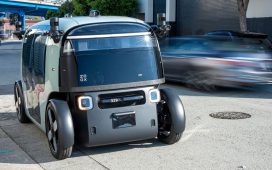When you hear “NVIDIA,” you probably think of powerful graphics cards and cutting-edge AI chips. And you’d be right most of the time. But at Computex 2025, NVIDIA showcased something truly captivating that points to the next frontier of artificial intelligence: humanoid robotics. This glimpse into a future where physical AI is about to change everything was worthy of being in our awards.
NVIDIA made a big splash by unveiling its Isaac GR00T N1.5. This isn’t just another robot like the ones we have seen previously. It’s the company’s latest step in creating a foundational model that allows humanoid robots to learn reasoning and complex skills. As NVIDIA’s CEO, Jensen Huang, passionately stated, “Physical AI and robotics will bring about the next industrial revolution.” He emphasized that NVIDIA is providing the essential building blocks for every stage of robotics development, from the AI brains to simulated training environments and powerful supercomputers.
NVIDIA GR00T N1.5, the potential brain of the humanoid robots of the future
What’s really exciting is that other major robotics companies, including familiar names like Agility Robotics and Boston Dynamics, alongside many others, are adopting NVIDIA’s Isaac platform. This widespread adoption suggests a unified push towards more intelligent and capable robots.
NVIDIA also showcased some incredibly clever tools designed to make training robots much faster and more cost-efficient. Imagine GR00T-Dreams Blueprint: you can show a robot a picture of a task, like stacking boxes, and the tool generates a video of the robot performing it. From that, the robot learns the key actions needed to perform the task in the real world. It’s almost like the robot “dreams” its new way of understanding.
Then there’s GR00T-Mimic. This tool allows a robot to watch a human perform a task a few times. Through advanced simulation software, it can then generate thousands of training examples from those few observations, almost like downloading a skill directly into the robot’s “brain,” reminiscent of scenes from “The Matrix.”
These innovations are huge for industrial applications. After all, they allow robots to be quickly trained or even retrained on the fly for new tasks, dramatically boosting efficiency and flexibility. NVIDIA’s push into humanoid robotics at Computex 2025 clearly demonstrates their vision for a future where intelligent machines play an even bigger role in our physical world.








